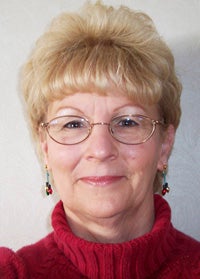Looking back at the county’s workforce
Published 7:00 am Sunday, June 10, 2012
Column: Coming Together, by Pat Mulso
The first settler came to Freeborn County in 1853 and built the first log cabin just southeast of Gordonsville. (This log cabin is located in the village at the Freeborn County Historical Museum.)
Freeborn County was organized into a voting precinct for territorial officers, and the first election was held Nov. 3, 1856, with 24 votes cast. By 1860, just a few years from the time that first settler came, the Freeborn County population grew to 3,367. For residents from foreign countries, the majority came from Norway, Ireland, Hanover and England and from the states of New York, Ohio, Wisconsin, New Jersey, Illinois, Vermont and Pennsylvania as well as other places in Minnesota.
The main occupation was farming with 618 residents claiming that as their occupation in the 1860 federal census. One hundred fifteen residents were day laborers, probably working on a farm. Freeborn County had nine blacksmiths, five carpenters, five ministers, four attorneys, four shoemakers, three printers, three hotel keepers, three physicians, three mechanics, three schoolteachers, three wagon makers, two merchants and two grocers. There were one each of the following: machinist, civil engineer, ditcher, miller, surveyor, cabinet maker, stage driver, sheriff, registrar of deeds, clerk, county treasurer, manufacturer, shingle maker and harness maker.
There were three listed as paupers and 338 attending school. (Note there were only three schoolteachers!) The county had 42 married couples.
Remember, Minnesota did not become a state until 1858. The Civil War began in 1861, and in 1869 the transcontinental railroad was completed. By 1870 Freeborn County’s population jumped to 10,208. The railroad brought many jobs, and in 1870 some of the new occupations in Freeborn County included railroad conductors, station agents, railroad laborers, brick makers and brick layers, lumber dealers, butchers, wheat buyers, grain dealers, domestic servants and even a horse doctor.
Here are some facts about what the different nationalities brought to America and why they moved from their native land.
Those coming from Germany were usually tradesman, shopkeepers and professional people, well-to-do and educated. Many settled in Wisconsin first, and they organized immigration societies. In 1860, 10 percent of the population of Minnesota was German-born.
Many Czechoslovakia immigrants were peasants, landlords and free thinkers. They came to America because of the change in inheritance laws, military service and the depression. Fifty to 70 percent discarded Catholicism in the United States, became farmers and many settled in Iowa before moving to Minnesota.
Ireland immigrants came to escape famine and for religious freedom. They were shopkeepers, miners and laborers but were reluctant to farm.
Norwegians were farmers and came for the land and better wages. They valued the Lutheran church, education and farming. Most of the population from Denmark blended into Norwegian settlements because of similarities, but were less apt to stay Lutheran.
Yankees/British Isles immigrants were upper class. They brought the township system of government (town halls). They were Protestants: Presbyterian, Episcopal, Methodist and Baptist.
In 1896 the official election instructions in Minnesota were issued in nine languages: English, German, Norwegian, Swedish, Finnish, French, Czech, Italian and Polish.
We continue to see new influences in our workforce as new nationalities begin to find their place within our society. This has been happening from the beginning. Have we learned from our history or do we need to embrace change and new ideas and learn to be better listeners, learn to collaborate and blend our workforces on all levels of the scale to provide opportunities for all our residents?
We live in a great land. Let’s celebrate our diversity!
Pat Mulso is the executive director of the Freeborn County Historical Society and a contributing writer for the Albert Lea Human Rights Commission.


